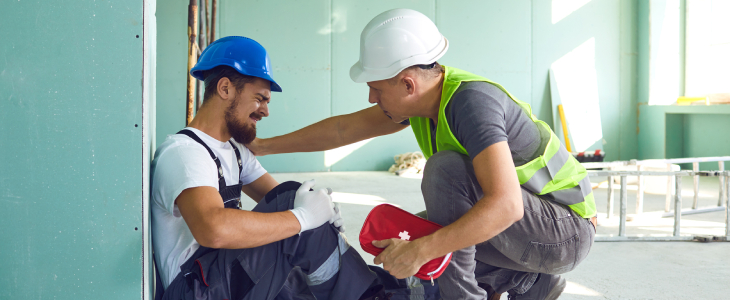Have you ever considered the hazards lurking on a construction site? From towering scaffolds to powerful machinery, construction workers face a unique set of risks every day. These environments are fraught with potential for accidents, ranging from minor injuries to life-altering events. Understanding these dangers is crucial, whether you’re on the job or just passing by a site. In this discussion, we’ll examine the various facets of construction accidents, shedding light on their causes, impacts, and the legal landscape surrounding them.
Understanding Construction Accidents
Construction accidents encompass a broad range of incidents occurring on or around construction sites. These can result from various hazards that exist on these sites. Each type of accident has its unique causes and consequences, often linked to inadequate safety measures, insufficient training, or equipment failure. Understanding these accidents requires a close look at the interplay between human factors, environmental conditions, and the use of technology in construction. Awareness and adherence to safety standards are crucial in preventing these incidents. However, when accidents happen, they can be devastating.
Common Causes of Construction Accidents
- Falls from Heights: One of the most common causes of construction accidents is falls from scaffolding, ladders, or roofs, often due to inadequate safety measures or faulty equipment.
- Struck by Objects: Workers are frequently injured by falling tools, materials, or debris, especially when overhead work is being conducted without proper safety precautions.
- Electrocutions: Exposure to live wires, incomplete electrical systems, or the improper use of electrical equipment can lead to serious accidents, emphasizing the need for strict adherence to electrical safety standards.
- Machinery Accidents: Heavy machinery like cranes, bulldozers, and forklifts, if improperly supplied, operated, or maintained, can be a significant hazard, causing severe injuries or fatalities.
- Trench or Wall Collapses: Inadequately secured trenches or walls can collapse, trapping workers, a risk that increases without strict compliance with excavation safety protocols.
- Exposure to Harmful Substances: Workers can suffer long-term health issues from exposure to hazardous materials like asbestos or chemical spills, particularly when proper protective gear is not provided.
The Impact of Construction Accidents on Workers
Construction accidents can have a profound impact on workers, both physically and emotionally. Injuries range from minor cuts and bruises to severe, life-altering conditions like spinal cord injuries or traumatic brain injuries and in extreme cases, death. Beyond the immediate physical harm, these accidents often have long-lasting effects, including chronic pain, disability, and psychological trauma such as PTSD. The repercussions extend beyond the initial injuries, affecting the ability to work, family life, and overall quality of life. For many, recovering from a construction accident involves not just the physical journey but a comprehensive process of reclaiming their livelihood and well-being.
Legal Rights and Protections for Construction Workers
Construction workers in New York State are entitled to a range of legal rights and protections designed to ensure their safety and well-being. Key among these is the right to a safe workplace, mandated by federal regulations such as OSHA as well as state regulations and standards. Employers are required to provide proper safety equipment and training to prevent accidents. In the event of a construction ccident, workers’ compensation offers a critical safety net, providing medical benefits and partial wage coverage. However, this system does not cover the full extent of damages, especially in cases of severe injury. In such scenarios, workers may have the option to pursue additional claims against responsible parties, potentially including equipment manufacturers, subcontractors, and building owners to seek full compensation for their losses and suffering. New York’s Scaffolding Law can often be used to apply strict liability against these parties.
Steps to Take After a Construction Accident
- Seek Immediate Medical Attention: Prioritize your health by getting prompt medical treatment for your injuries, even if they seem minor.
- Report the Accident: Inform your supervisor or site manager about the accident as soon as possible, following your company’s reporting procedures.
- Document Everything: Take photos of the accident scene and your injuries, and keep a record of all medical treatments and expenses.
- Gather Witness Information: If anyone witnessed the accident, get their names and contact details.
- Preserve Physical Evidence: Keep any damaged personal items (like ladders, hard hats or tools) as they might be crucial evidence.
- Consult a Personal Injury Attorney: Seek legal advice to understand your rights and the potential for compensation beyond workers’ compensation.
- Avoid Signing Documents: Refrain from signing any documents from your employer or insurance companies before consulting with an attorney.
- Keep a Diary: Maintain a journal detailing your recovery process, noting any pain, discomfort, or challenges you face during your recuperation.
How We Can Help You
At Civardi & Obiol, we understand the complexities and challenges you face following a construction accident. Our dedicated team offers comprehensive legal support, guiding you through the process of workers’ compensation claims and exploring additional avenues for rightful compensation. We are well versed in OSHA, Labor Law, and industry standards. Moreover, we have been highly successful in identifying multiple targets for compensation in the most serious of construction accidents throughout Nassau County. Our commitment is to advocate fiercely for your rights, aiming to secure the maximum compensation for your injuries and losses. Contact us today—with Civardi & Obiol by your side, you gain a partner who is deeply invested in your recovery and well-being, providing personalized legal care every step of the way.
